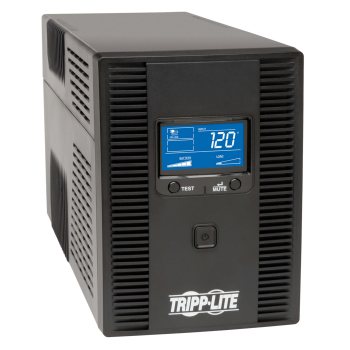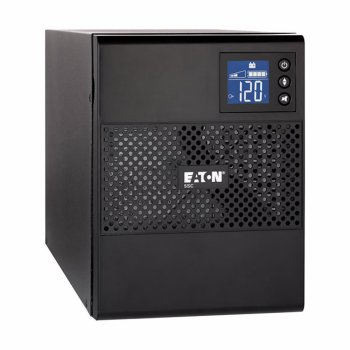- High power capacity
- Comprehensive protection features
- Energy-efficient design
- Multiple outlets
- High power capacity
- Advanced management features
- Rack-mountable
- Reliable performance
- Bulky design
- Higher price point
- Heavy
- Expensive
Tripp Lite SMART1500LCDT vs Eaton 5SC1500
The Tripp Lite SMART1500LCDT and Eaton 5SC1500 are two high-performance uninterruptible power supply (UPS) systems designed to provide reliable backup power and protection for critical equipment in various environments, including data centers, servers, and network infrastructure. In this comparison, we'll delve into the features, specifications, and benefits of each product to help you make an informed decision.
Overview
The Tripp Lite SMART1500LCDT is a 1500VA/900W UPS system that offers advanced features such as line-interactive technology, automatic voltage regulation (AVR), and a built-in LCD display for monitoring and control. The Eaton 5SC1500, on the other hand, is a 1500VA/1050W UPS system that utilizes online double-conversion technology, providing a high level of power quality and reliability.
Power Capacity and Runtime
Both UPS systems have a similar power capacity, with the Tripp Lite SMART1500LCDT offering 1500VA/900W and the Eaton 5SC1500 providing 1500VA/1050W. However, the Eaton 5SC1500 has a slightly higher wattage rating, making it more suitable for applications that require higher power output.
In terms of runtime, the Tripp Lite SMART1500LCDT provides up to 12 minutes of backup time at full load, while the Eaton 5SC1500 offers up to 10 minutes. However, the actual runtime will depend on the connected load and the efficiency of the UPS system.
Technology and Power Quality
The Tripp Lite SMART1500LCDT uses line-interactive technology, which provides a high level of power quality and efficiency. This technology allows the UPS to regulate the input voltage and provide a stable output voltage, even in the presence of voltage fluctuations or distortions.
In contrast, the Eaton 5SC1500 utilizes online double-conversion technology, which provides an even higher level of power quality and reliability. This technology converts the input AC power to DC power and then back to AC power, providing a pure sine wave output that is free from distortions and noise.
Monitoring and Control
The Tripp Lite SMART1500LCDT features a built-in LCD display that provides real-time monitoring and control of the UPS system. The display shows vital information such as input voltage, output voltage, load level, and battery status, allowing users to quickly identify any issues or anomalies.
The Eaton 5SC1500 also offers advanced monitoring and control capabilities, including remote monitoring and management through a web-based interface. This allows IT administrators to monitor the UPS system remotely and receive alerts and notifications in case of any issues or events.
Connectivity and Compatibility
Both UPS systems offer a range of connectivity options, including USB, serial, and SNMP interfaces. The Tripp Lite SMART1500LCDT also features a built-in DB9 port for connecting to external devices, such as servers or network equipment.
In terms of compatibility, both UPS systems are designed to work with a wide range of operating systems and devices, including Windows, Linux, and macOS.
Conclusion
In conclusion, the Tripp Lite SMART1500LCDT and Eaton 5SC1500 are two high-performance uninterruptible power supply (UPS) systems that offer advanced features and capabilities for providing reliable backup power and protection for critical equipment. While both products have their strengths and weaknesses, the Eaton 5SC1500 stands out for its online double-conversion technology and higher wattage rating, making it more suitable for applications that require high power output and pure sine wave quality.
On the other hand, the Tripp Lite SMART1500LCDT offers a more affordable solution with advanced features such as line-interactive technology and a built-in LCD display. Ultimately, the choice between these two products will depend on your specific needs and requirements, including the type of equipment you need to protect, the power capacity required, and the level of monitoring and control needed.
As an uninterruptible power supply (UPS) system is a critical component in any data center or network infrastructure, it's essential to carefully evaluate your options and choose a product that meets your specific needs and provides reliable backup power and protection for your equipment.































